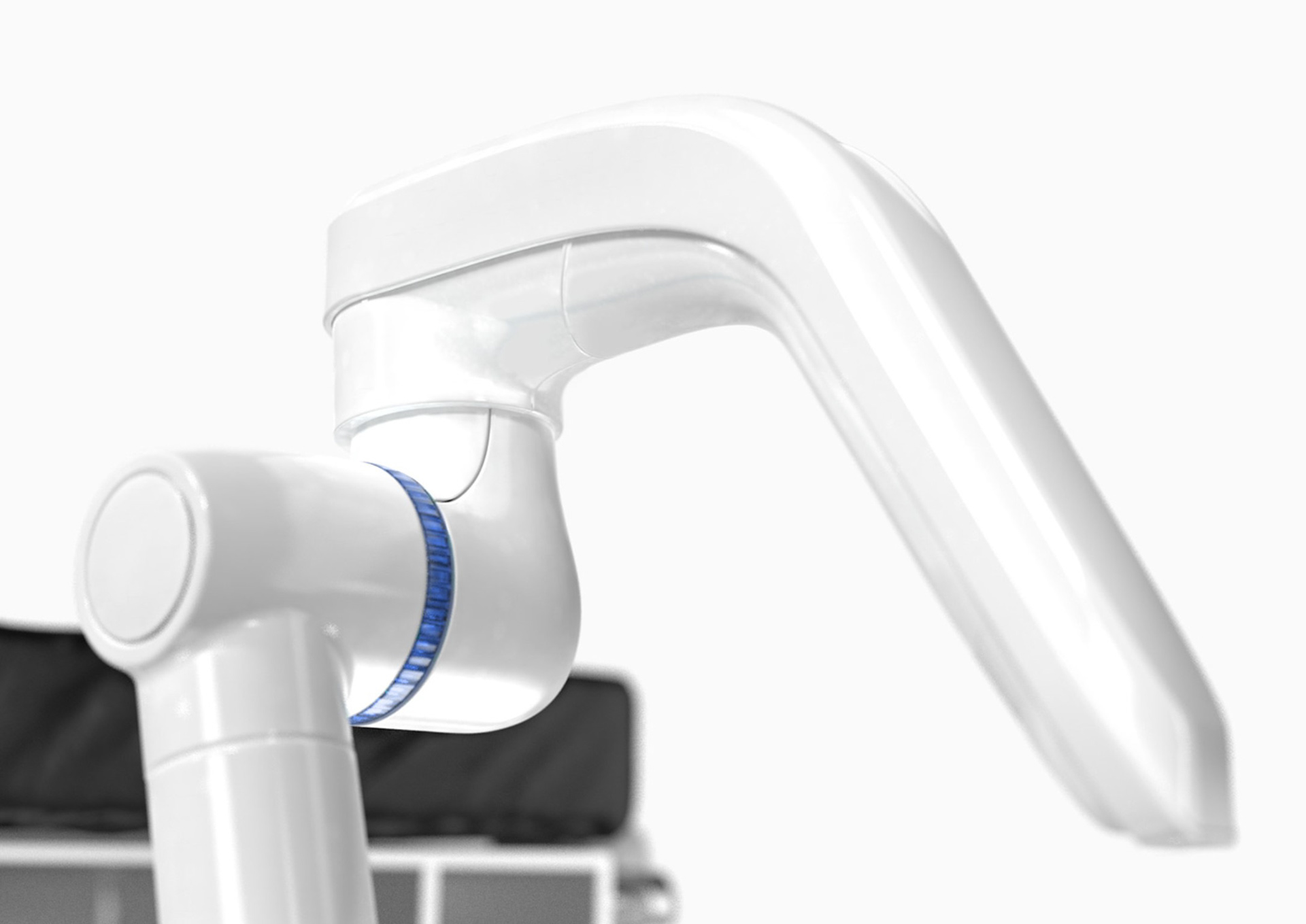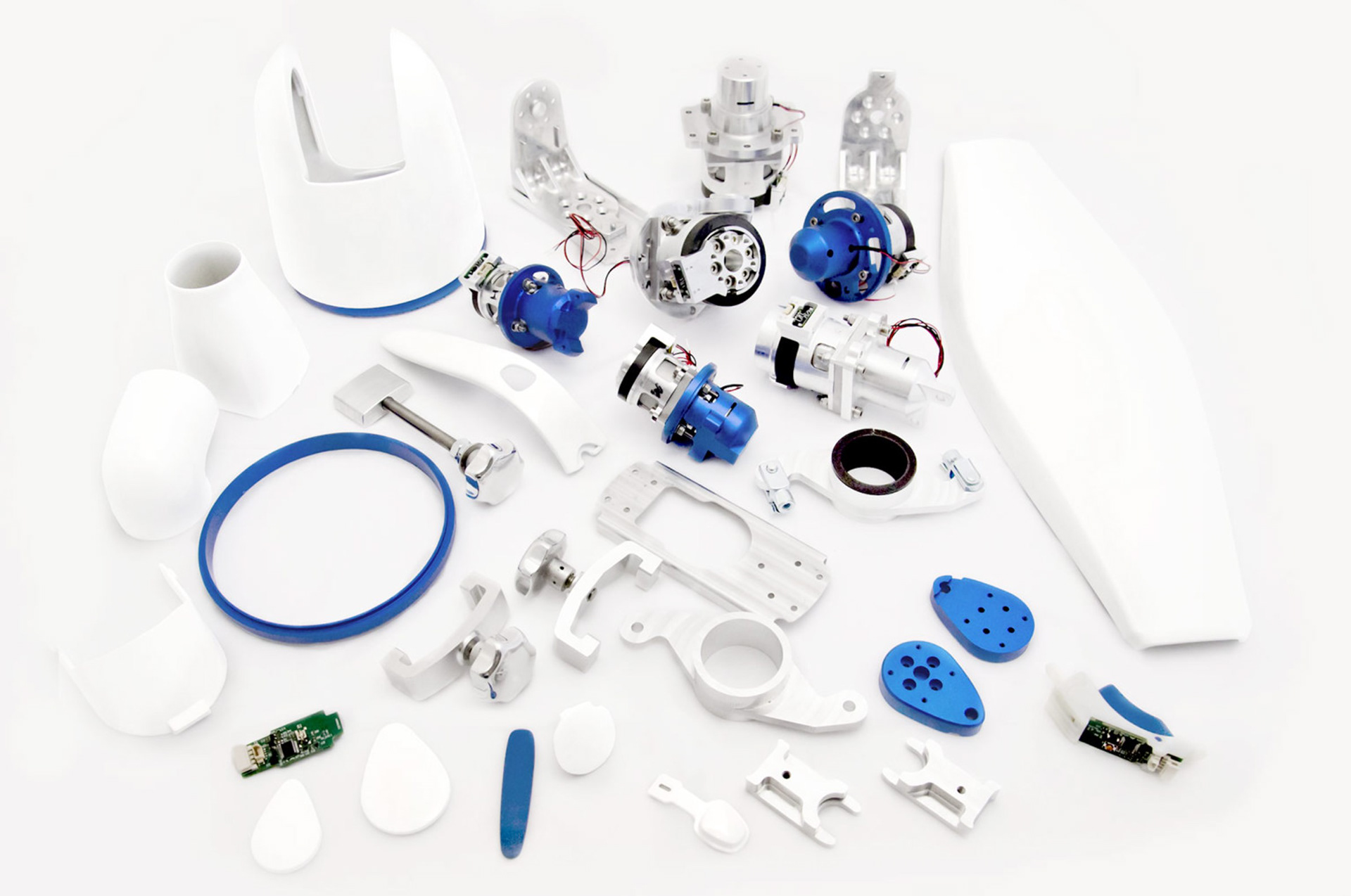Background
During my year in industry with Smallfry was fortunate enough to help in part with the concept development and industrial design of surgical robotics for the center of robotics at University College London.
Smallfry: We are so focused on how robots are rapidly replacing the workforce that we often forget that behind those robots there is still a person in control. This creates a new facet of design, the merging of robotics and human-centered design. Partnering with Imperial College London, we took on the challenge of discovering how robots will affect our working lives. Initially we expected the user-centered design process to become easier. All the problems surgeons face would be solved with the robot, right? Wrong.
*Disclaimer, I was working on this six-year project for one-year with Smallfry, all credit goes to the project team for the incredible success of the project.
The problem
Robotics give surgeons a much greater degree of precision and freedom, but fatigue, poor posture and tiredness are inevitable parts of any surgeon’s life. One of the tasks was to see how we could intuitively translate the skills and techniques of experienced surgeons into the user interface of ICL’s robot.
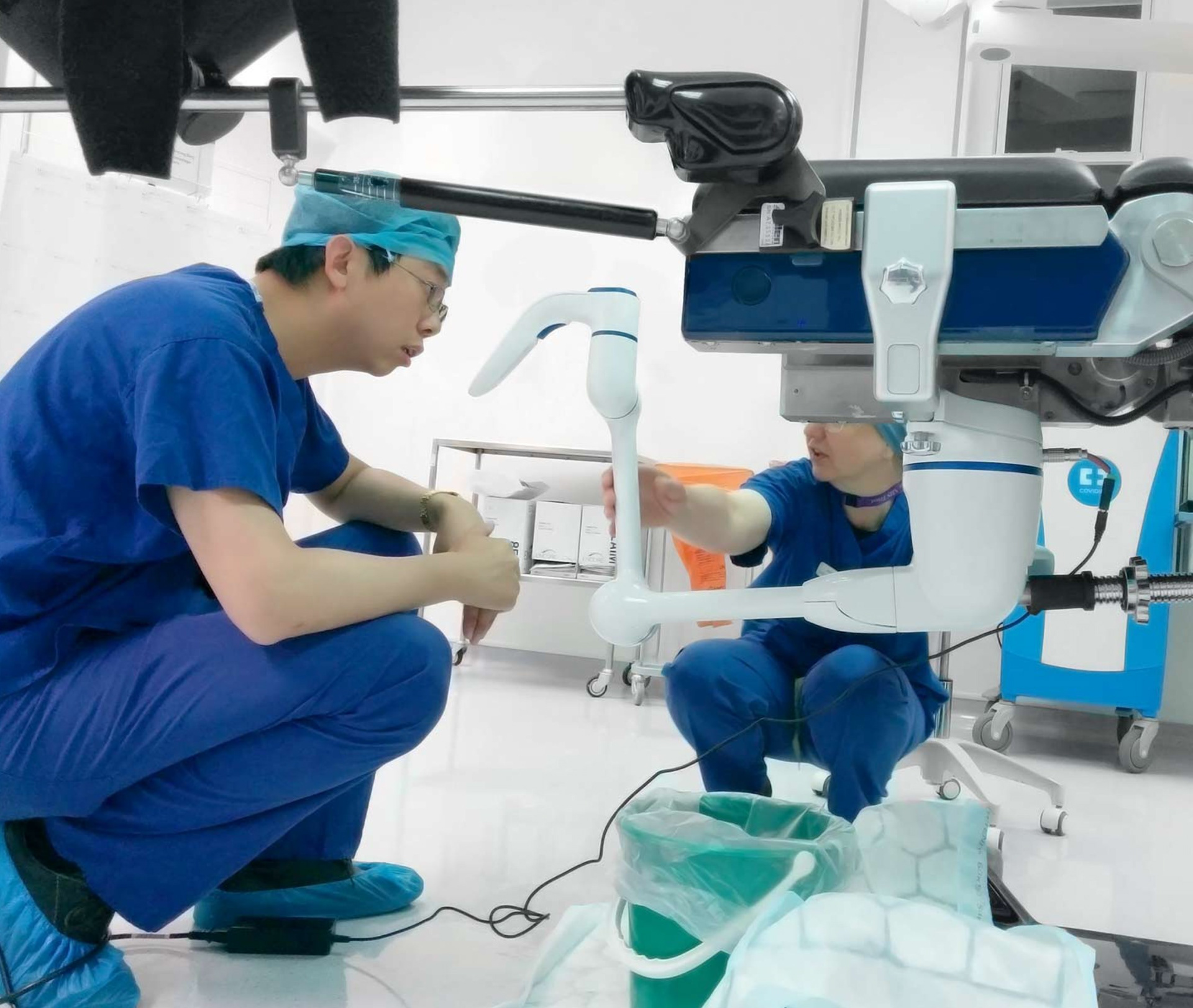
Research
We spent hours observing surgeons in the operating theatre. It became clear that a small annoyance during an 8hr operation could build up to become substantial pain for the surgeon. Testing prototypes was essential for creating an interface that avoided these annoyances and creating a system that surgeons could instinctively utilize.
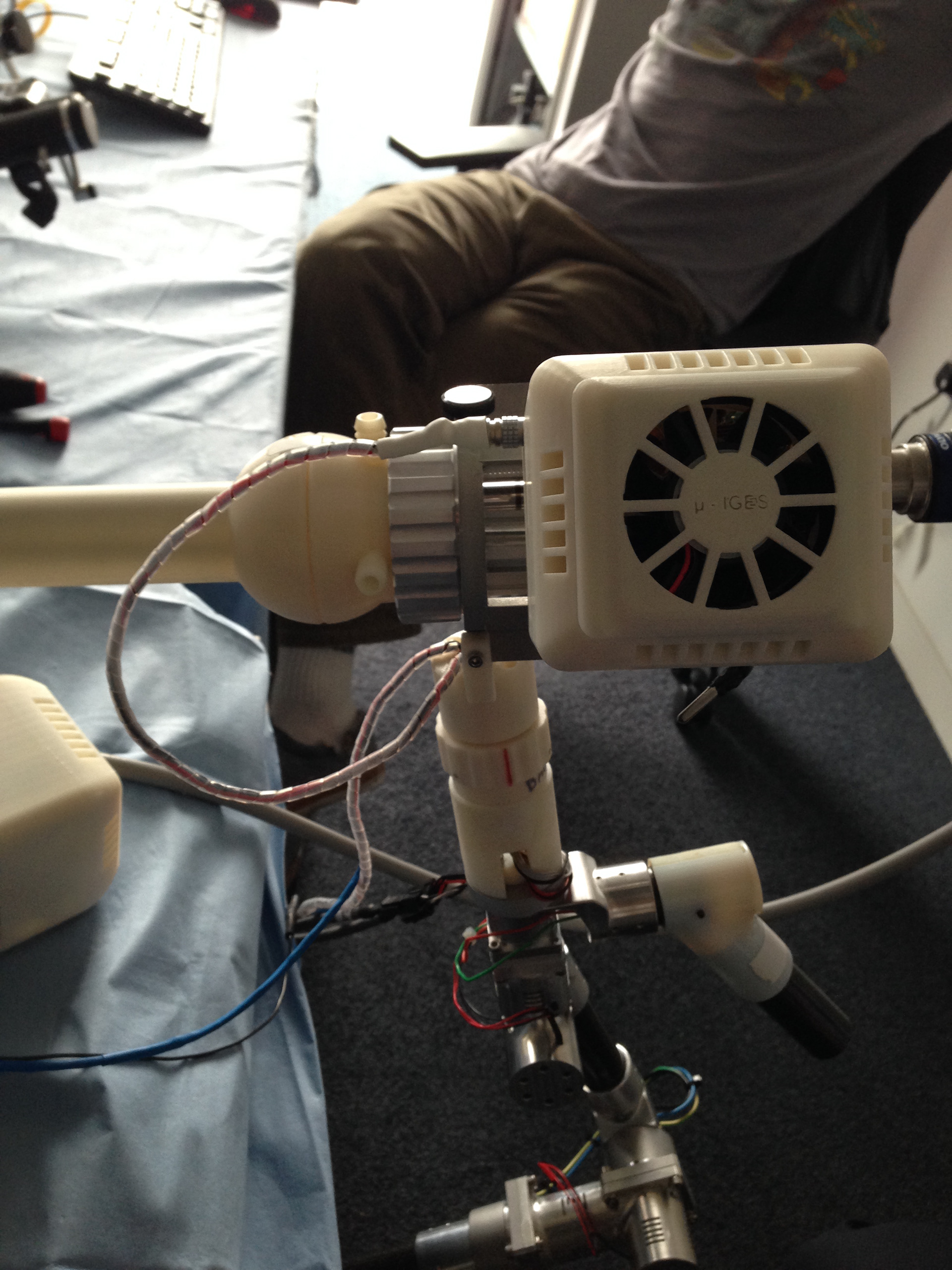
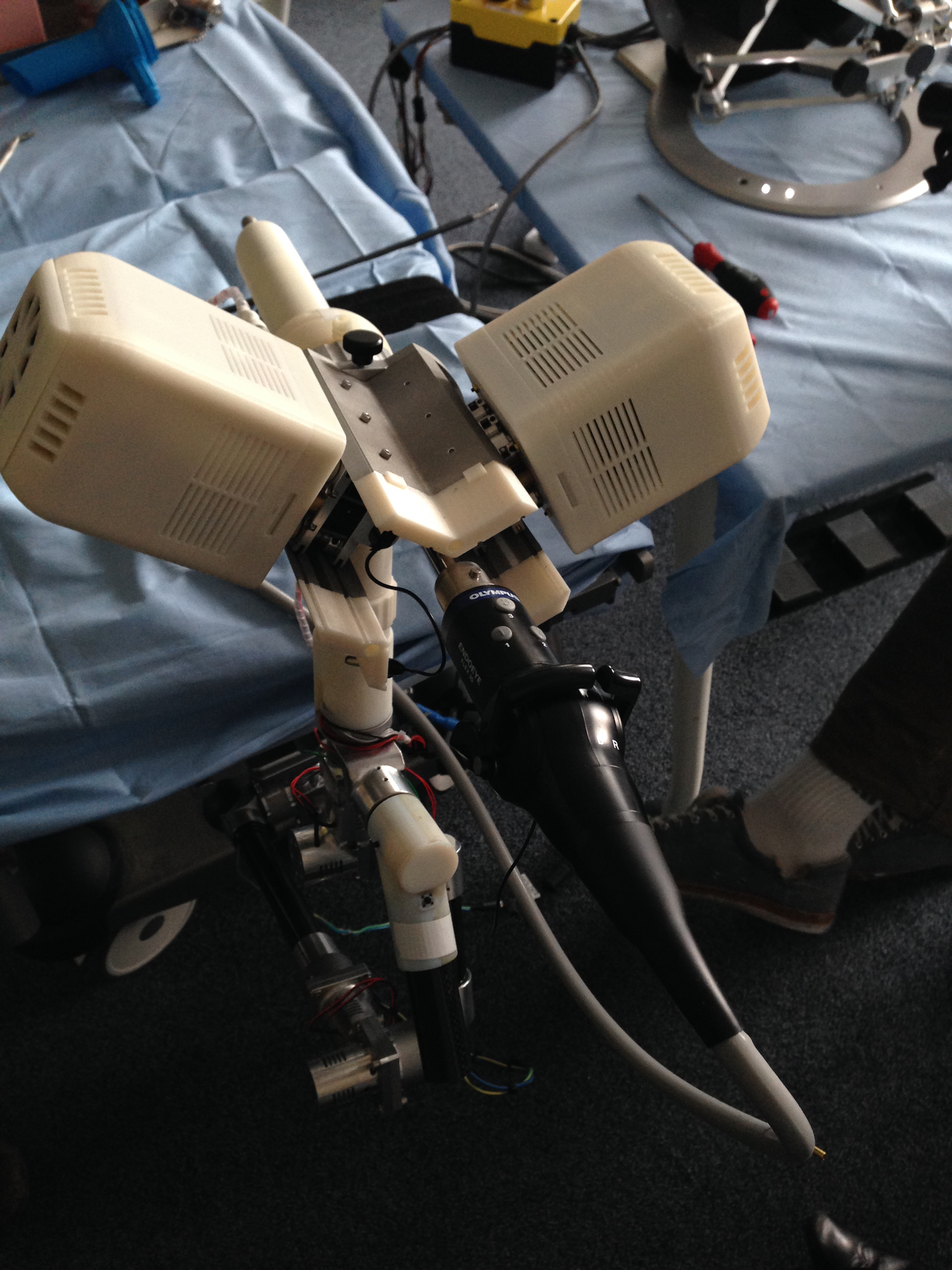
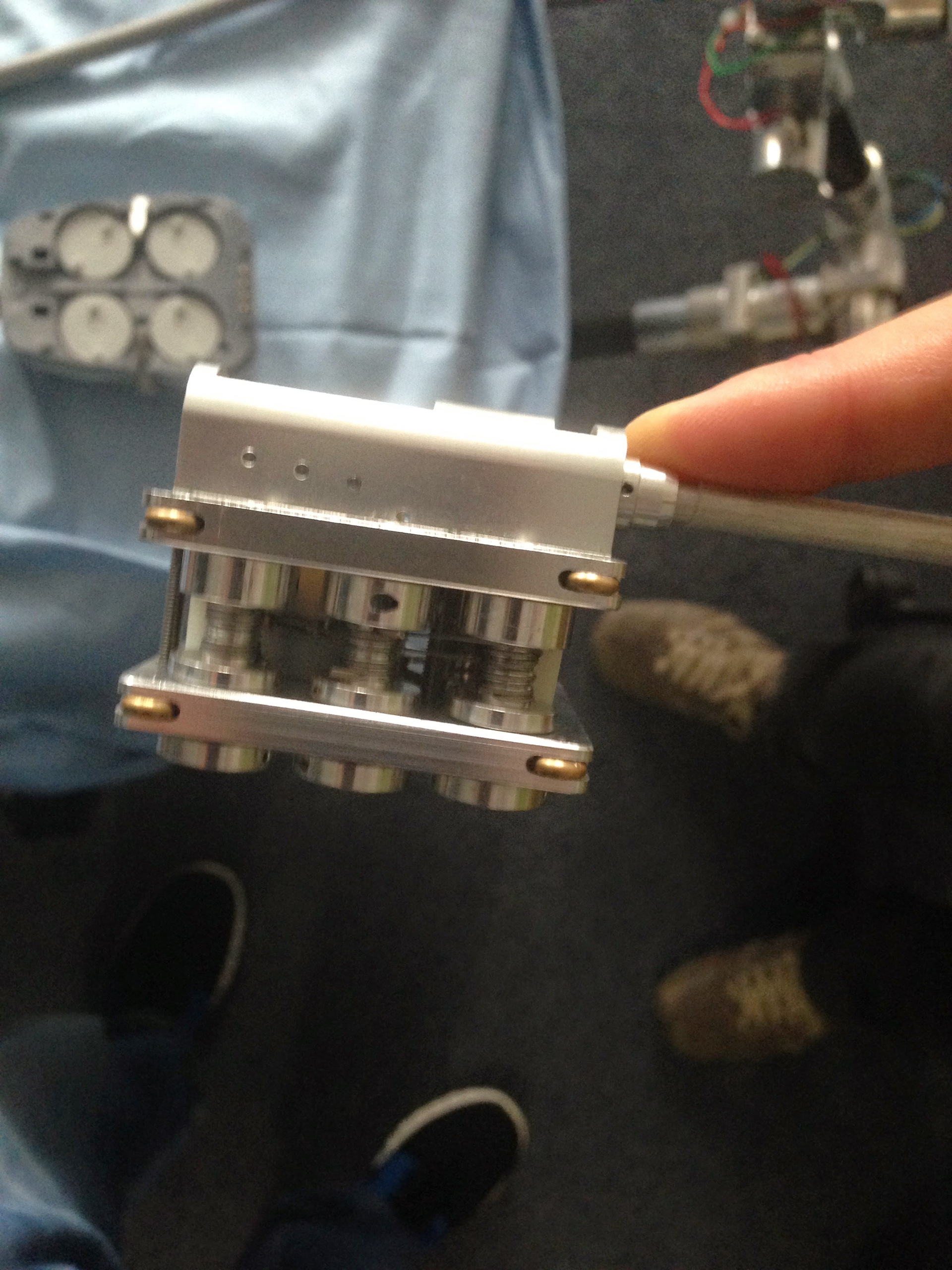
Concept design
I was involved in the concept design of the external housing and toolhead quick swap system. Designing around the mechanical limitations while making something that appears much more friendly proved to be a challenge throughout the project.
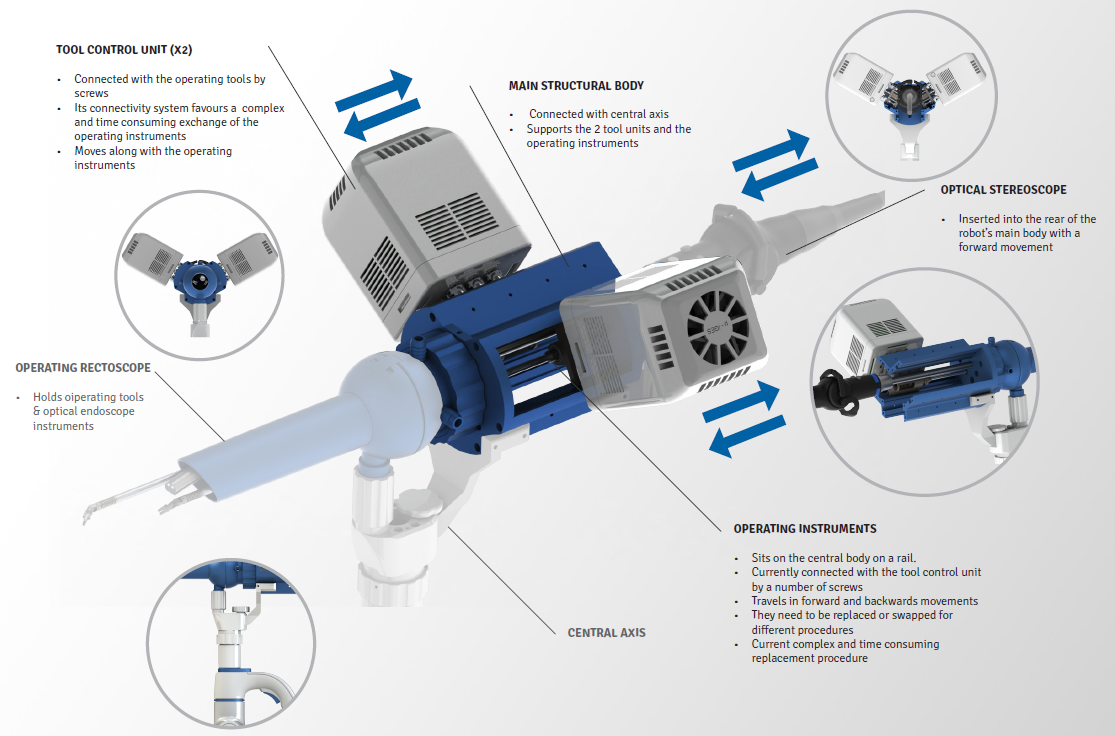
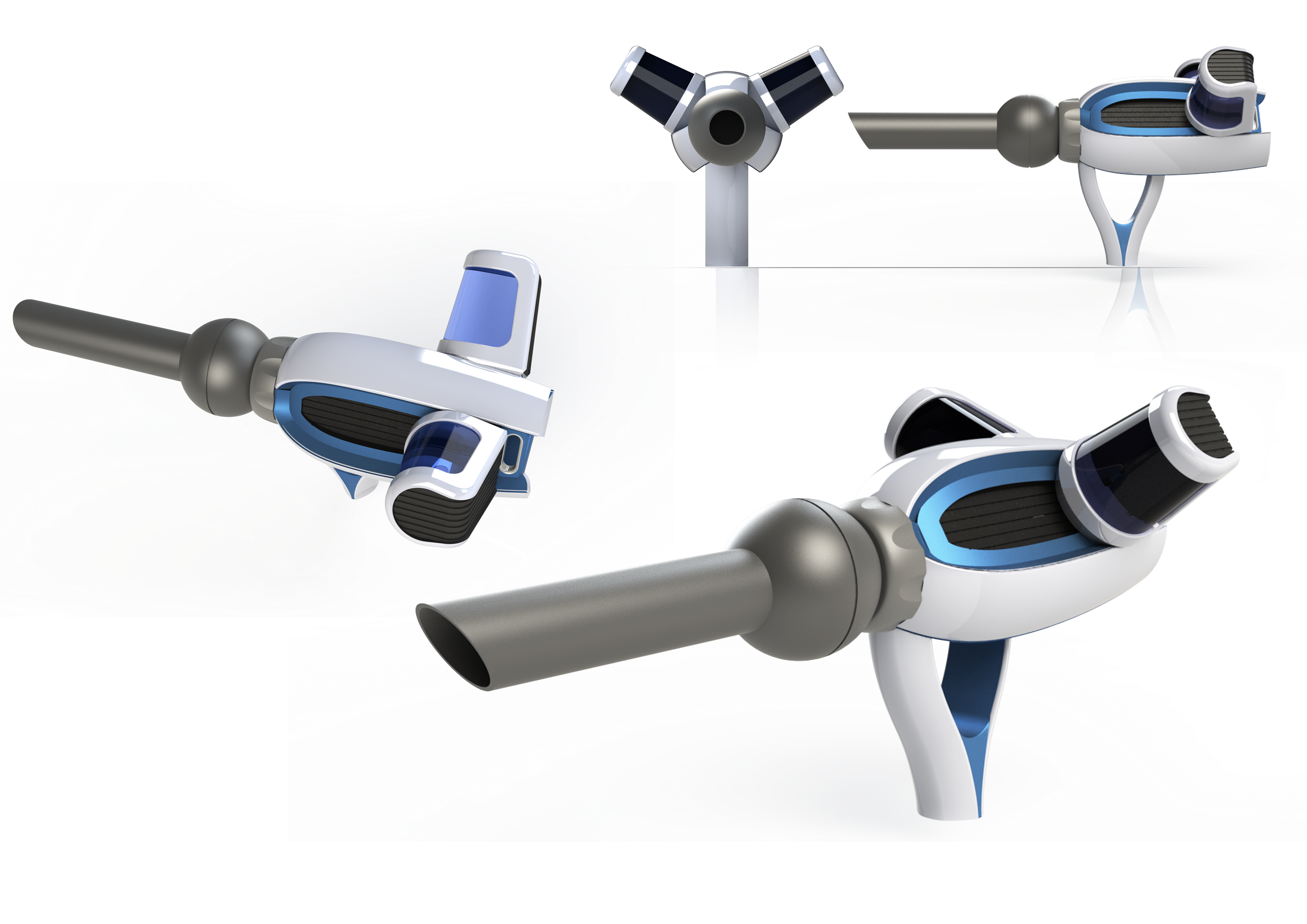

Results
Our user-centered approach to surgical device design made the transition from ‘hands-on’ expert interventions to robot-assisted surgery an intuitive one for surgeons.
Having been CE marked the product went on to perform very well in clinical trials. It now serves as a successful example of how University IP can translate into an effective ‘spin out’ opportunity.
